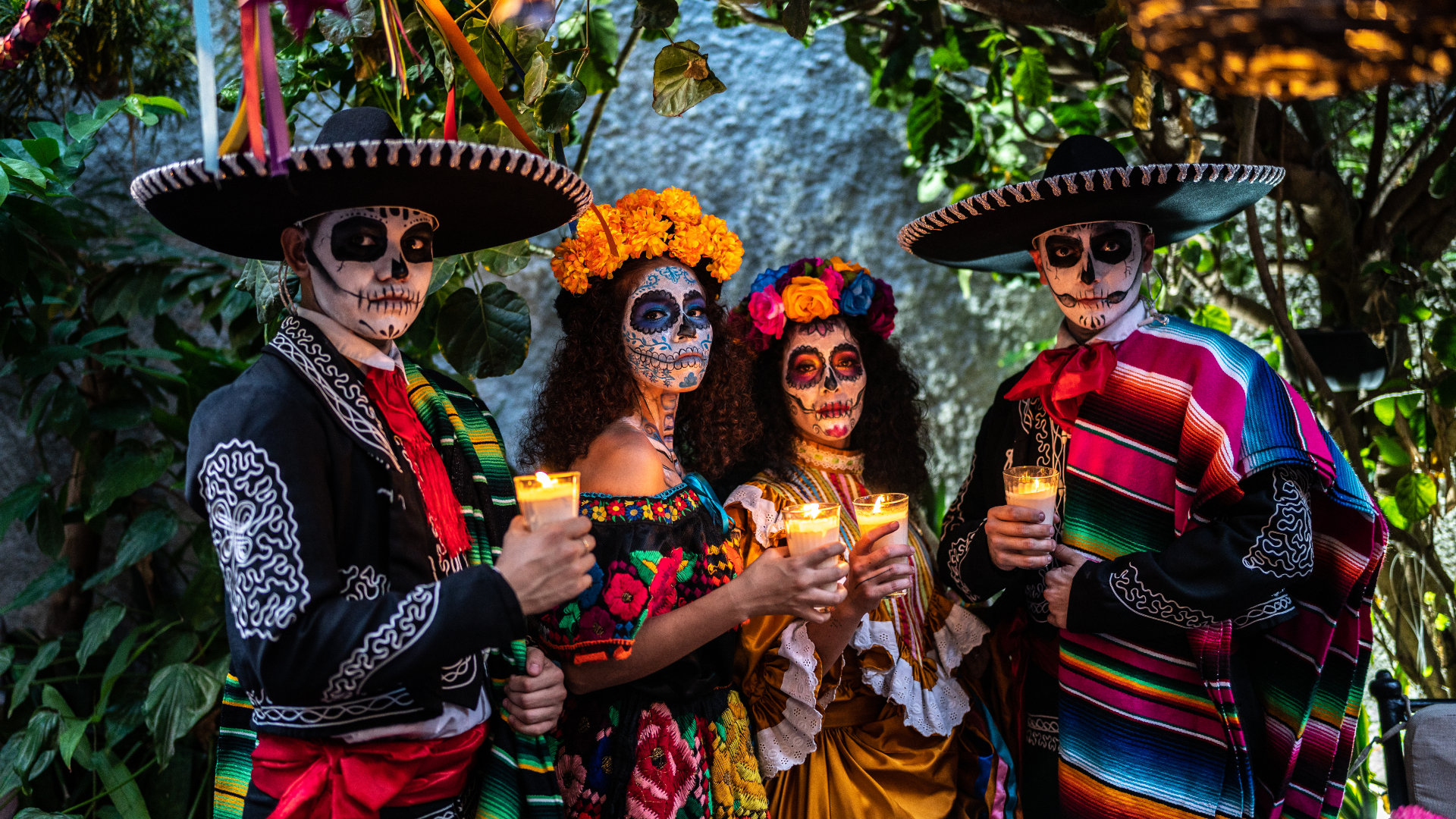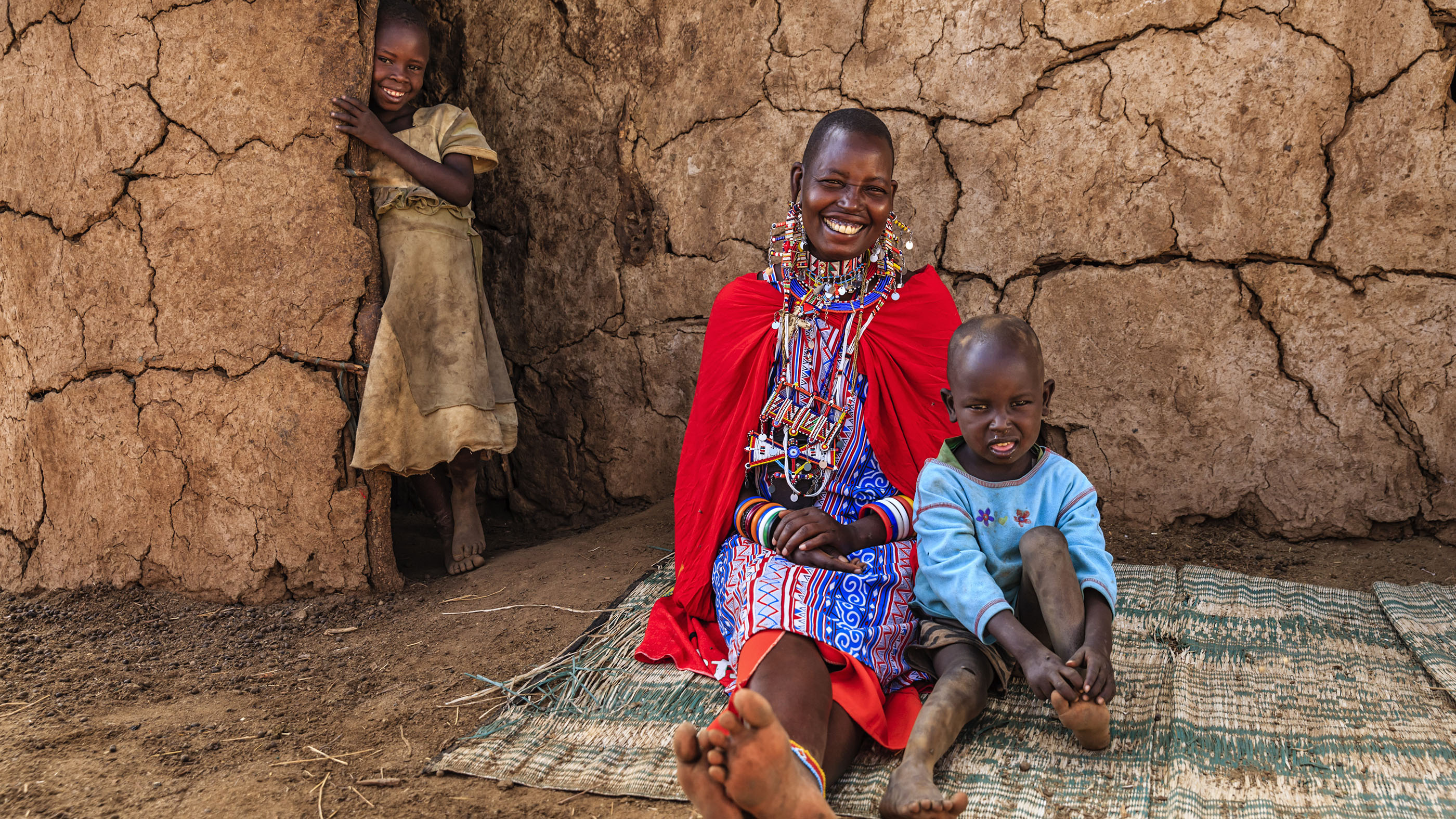What is culture?
Culture encompasses religion, food, what we wear, how we wear it, our language, marriage, music and is different all over the world.

Culture is the characteristics and knowledge of a particular group of people, encompassing language, religion, cuisine, social habits, music and arts.
The Center for Advanced Research on Language Acquisition goes a step further, defining culture as shared patterns of behaviors and interactions, cognitive constructs and understanding that are learned by socialization. Thus, culture can be seen as the growth of a group identity fostered by social patterns unique to the group.
"Culture encompasses religion, food, what we wear, how we wear it, our language, marriage, music, what we believe is right or wrong, how we sit at the table, how we greet visitors, how we behave with loved ones and a million other things," Cristina De Rossi, an anthropologist at Barnet and Southgate College in London, told Live Science.
Many countries, such as France, Italy, Germany, the US, India, Russia and China are noted for their rich cultures, the customs, traditions, music, art and food being a continual draw for tourists.
The word "culture" derives from a French term, which in turn derives from the Latin "colere," which means to tend to the earth and grow, or cultivation and nurture, according to Arthur Asa Berger. "It shares its etymology with a number of other words related to actively fostering growth," De Rossi said.
Western culture
The term "Western culture" has come to define the culture of European countries as well as those that have been heavily influenced by European immigration, such as the United States, according to Khan University. Western culture has its roots in the Classical Period of the Greco-Roman era (the fourth and fifth centuries B.C.) and the rise of Christianity in the 14th century. Other drivers of Western culture include Latin, Celtic, Germanic and Hellenic ethnic and linguistic groups.
Any number of historical events have helped shape Western culture during the past 2,500 years. The fall of Rome, often pegged to A.D. 476, cleared the way for the establishment of a series of often-warring states in Europe, according to Stanford University historian Walter Scheidel, each with their own cultures. The Black Death of the 1300s cut the population of Europe by one-third to one-half, rapidly remaking society. As a result of the plague, writes Ohio State University historian John L. Brooke, Christianity became stronger in Europe, with more focus on apocalyptic themes. Survivors in the working class gained more power, as elites were forced to pay more for scarce labor. And the disruption of trade routes between East and West set off new exploration, and ultimately, the incursion of Europeans into North and South America.
Get the world’s most fascinating discoveries delivered straight to your inbox.
Today, the influences of Western culture can be seen in almost every country in the world.
Eastern culture
Eastern culture generally refers to the societal norms of countries in Far East Asia (including China, Japan, Vietnam, North Korea and South Korea) and the Indian subcontinent. Like the West, Eastern culture was heavily influenced by religion during its early development, but it was also heavily influenced by the growth and harvesting of rice, according to a research article published in the journal Rice in 2012. In general, in Eastern culture there is less of a distinction between secular society and religious philosophy than there is in the West.
However, this umbrella covers an enormous range of traditions and histories. For example, Buddhism originated in India, but it was largely overtaken by Hinduism after the 12th century, according to Britannica.
As a result, Hinduism became a major driver of culture in India, while Buddhism continued to exert influence in China and Japan. The preexisting cultural ideas in these areas also influenced religion. For example, according to Jiahe Liu and Dongfang Shao, Chinese Buddhism borrowed from the philosophy of Taoism, which emphasizes compassion, frugality and humility.
Centuries of interactions — both peaceful and aggressive — in this region also led to these cultures influencing each other. Japan, for example, controlled or occupied Korea in some form between 1876 and 1945. During this time, many Koreans were pressured or forced into giving up their names for Japanese surnames, according to History.com.
Latin culture
The geographic region encompassing "Latin culture" is widespread. Latin America is typically defined as those parts of Central America, South America and Mexico where Spanish or Portuguese are the dominant languages. These are all places that were colonized by or influenced by Spain or Portugal starting in the 1400s. It is thought that French geographers used the term "Latin America" to differentiate between Anglo and Romance (Latin-based) languages, though some historians, such as Michael Gobat, author of "The Invention of Latin America: A Transnational History of Anti-Imperialism, Democracy and Race" (American Historical Review, Voll 118, Issue 5, 2013), dispute this.
Latin cultures are thus incredibly diverse, and many blend Indigenous traditions with the Spanish language and Catholicism brought by Spanish and Portuguese colonizers. Many of these cultures were also influenced by African cultures due to enslaved Africans being brought to the Americas starting in the 1600s, according to the African American Registery. These influences are particularly strong in Brazil and in Caribbean nations.
Latin culture continues to evolve and spread. A good example is Día de los Muertos, or Day of the Dead, a holiday dedicated to remembering the departed that is celebrated on Nov. 1 and Nov. 2. Day of the Dead dates back to before Christopher Columbus landed in North America, but was moved to its current celebration date by Spanish colonizers, who merged it with the Catholic All Saints Day.
Mexican immigrants to the United States brought the holiday with them, and in the 1970s, artists and activities brought focus to Día de los Muertos as a way of celebrating their Chicano (Mexican-American) heritage, according to the Smithsonian American Art Museum. The holiday is now well-known in the United States.
Middle Eastern culture
Roughly speaking, the Middle East encompasses the Arabian peninsula as well as the eastern Mediterranean. The North African countries of Libya, Egypt and Sudan are also sometimes included, according to Britannica. The term "Middle Eastern culture" is another umbrella that encompasses a huge diversity of cultural practices, religious beliefs and daily habits. The region is the birthplace of Judaism, Christianity and Islam and is home to dozens of languages, from Arabic to Hebrew to Turkish to Pashto.
While there is significant religious diversity in the Middle East, the predominant religion by numbers is Islam, and Islam has played a large role in the cultural development of the region. Islam originated in what is today Saudi Arabia in the early seventh century. An influential moment for the culture and development of the Middle East came after the death of the religion's founder, Muhammad, in 632, according to the Metropoliton Museum.
Some followers believed the next leader should be one of Muhammad's friends and confidants; others believed leadership must be passed through Muhammad's bloodline. This led to a schism between Shia Muslims, those who believed in the importance of the bloodline, and Sunni Muslims, who believed leadership should not pass through the family. Today, about 85% of Muslims are Sunni, according to the Council on Foreign Relations. Their rituals and traditions vary somewhat, and divisions between the two groups often fuel conflict.
Middle Eastern culture has also been shaped by the Ottoman Empire, which ruled a U-shaped ring around the eastern Mediterranean between the 14th and early 20th centuries, according to Britannica. Areas that were part of the Ottoman Empire are known for distinctive architecture drawn from Persian and Islamic influences.
African culture
Africa has the longest history of human habitation of any continent: Humans originated there and began to migrate to other areas of the world around 400,000 years ago, according to the Natural History Museum in London. Tom White, who serves as the museum's senior curator of non-insect invertebrates, and his team were able to discover this by studying Africa's ancient lakes and the animals that lived in them. As of the time of this article, this research provides the oldest evidence for hominin species in the Arabian peninsula.
African culture varies not only between national boundaries, but within them. One of the key features of this culture is the large number of ethnic groups throughout the 54 countries on the continent. For example, Nigeria alone has more than 300 tribes, according to Culture Trip. Africa has imported and exported its culture for centuries; East African trading ports were a crucial link between East and West as early as the seventh century, according to The Field Museum. This led to complex urban centers along the eastern coast, often connected by the movement of raw materials and goods from landlocked parts of the continent.
It would be impossible to characterize all of African culture with one description. Northwest Africa has strong ties to the Middle East, while Sub-Saharan Africa shares historical, physical and social characteristics that are very different from North Africa, according to Britannica .
Some traditional Sub-Saharan African cultures include the Maasai of Tanzania and Kenya, the Zulu of South Africa and the Batwa of Central Africa. The traditions of these cultures evolved in very different environments. The Batwa, for example, are one of a group of ethnicities that traditionally live a forager lifestyle in the rainforest. The Maasai, on the other hand, herd sheep and goats on the open range.
What is cultural appropriation?
Oxford Reference describes cultural appropriation as: "A term used to describe the taking over of creative or artistic forms, themes, or practices by one cultural group from another."
An example might be a person who is not Native American wearing a Native American headdress as a fashion accessory. For example, Victoria's Secret was heavily criticized in 2012 after putting a model in a headdress reminiscent of a Lakota war bonnet, according to USA Today. These headdresses are laden with meaningful symbolism, and wearing one was a privilege earned by chieftains or warriors through acts of bravery, according to the Khan Academy. The model also wore turquoise jewelry inspired by designs used by Zuni, Navajo and Hopi tribes in the desert Southwest, illustrating how cultural appropriation can lump together tribes with very different cultures and histories into one stereotyped image.
More recently, in 2019, Gucci faced a similar backlash for selling an item named "the indy full turban" which caused considerable anger from the Sikh community, according to Esquire. Harjinder Singh Kukreja, a Sikh restaurateur and influencer, wrote to Gucci on Twitter, stating: "the Sikh Turban is not a hot new accessory for white models but an article of faith for practising Sikhs. Your models have used Turbans as ‘hats’ whereas practising Sikhs tie them neatly fold-by-fold. Using fake Sikhs/Turbans is worse than selling fake Gucci products."
Constant change
No matter what a culture looks like, one thing is for certain: Cultures change. "Culture appears to have become key in our interconnected world, which is made up of so many ethnically diverse societies, but also riddled by conflicts associated with religion, ethnicity, ethical beliefs, and, essentially, the elements which make up culture," De Rossi said. "But culture is no longer fixed, if it ever was. It is essentially fluid and constantly in motion."
This makes it difficult to define any culture in only one way. While change is inevitable, most people see value in respecting and preserving the past. The United Nations has created a group called The United Nations Educational, Scientific and Cultural Organization (UNESCO) to identify cultural and natural heritage and to conserve and protect it. Monuments, buildings and sites are covered by the group's protection, according to the international treaty, the Convention Concerning the Protection of the World Cultural and Natural Heritage. This treaty was adopted by UNESCO in 1972.
Additional reporting by Live Science Contributors Alina Bradford, Stephanie Pappas and Callum McKelvie.

Stephanie Pappas is a contributing writer for Live Science, covering topics ranging from geoscience to archaeology to the human brain and behavior. She was previously a senior writer for Live Science but is now a freelancer based in Denver, Colorado, and regularly contributes to Scientific American and The Monitor, the monthly magazine of the American Psychological Association. Stephanie received a bachelor's degree in psychology from the University of South Carolina and a graduate certificate in science communication from the University of California, Santa Cruz.
 Live Science Plus
Live Science Plus










